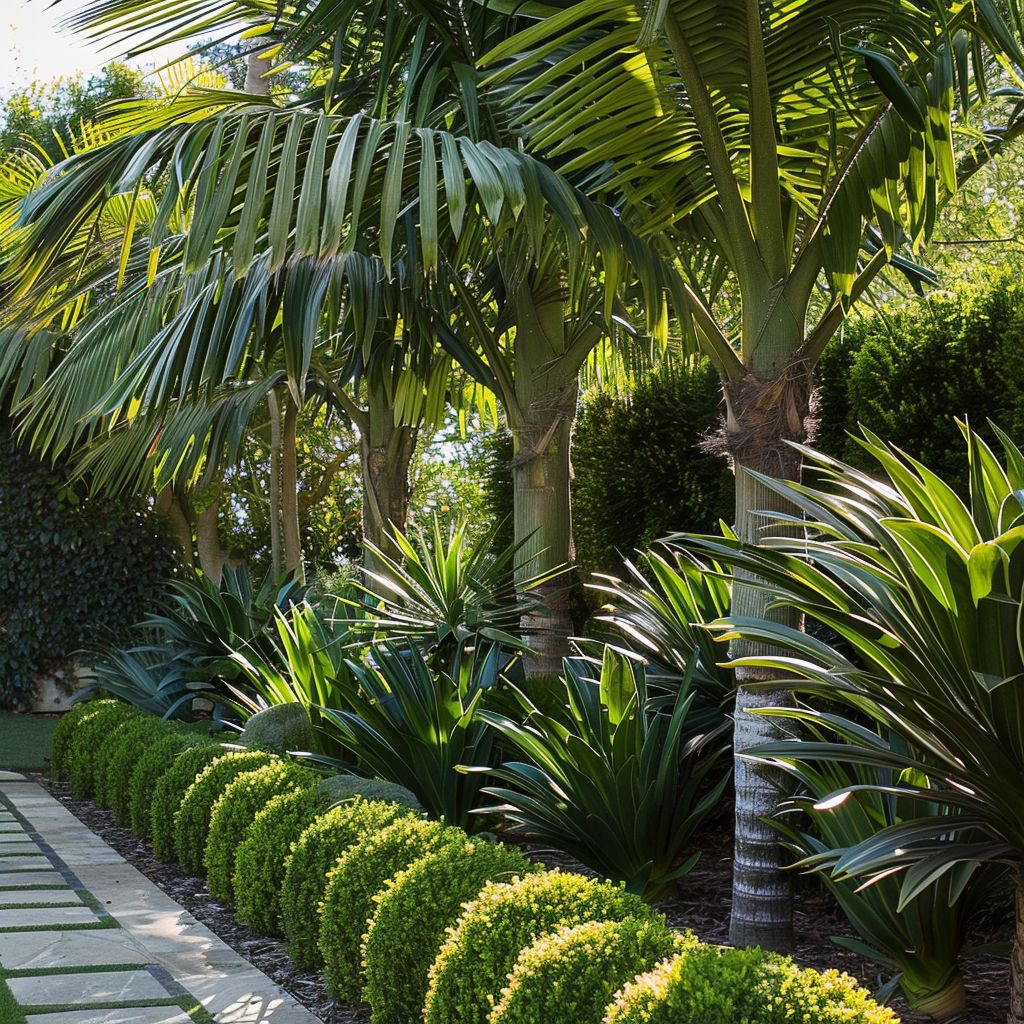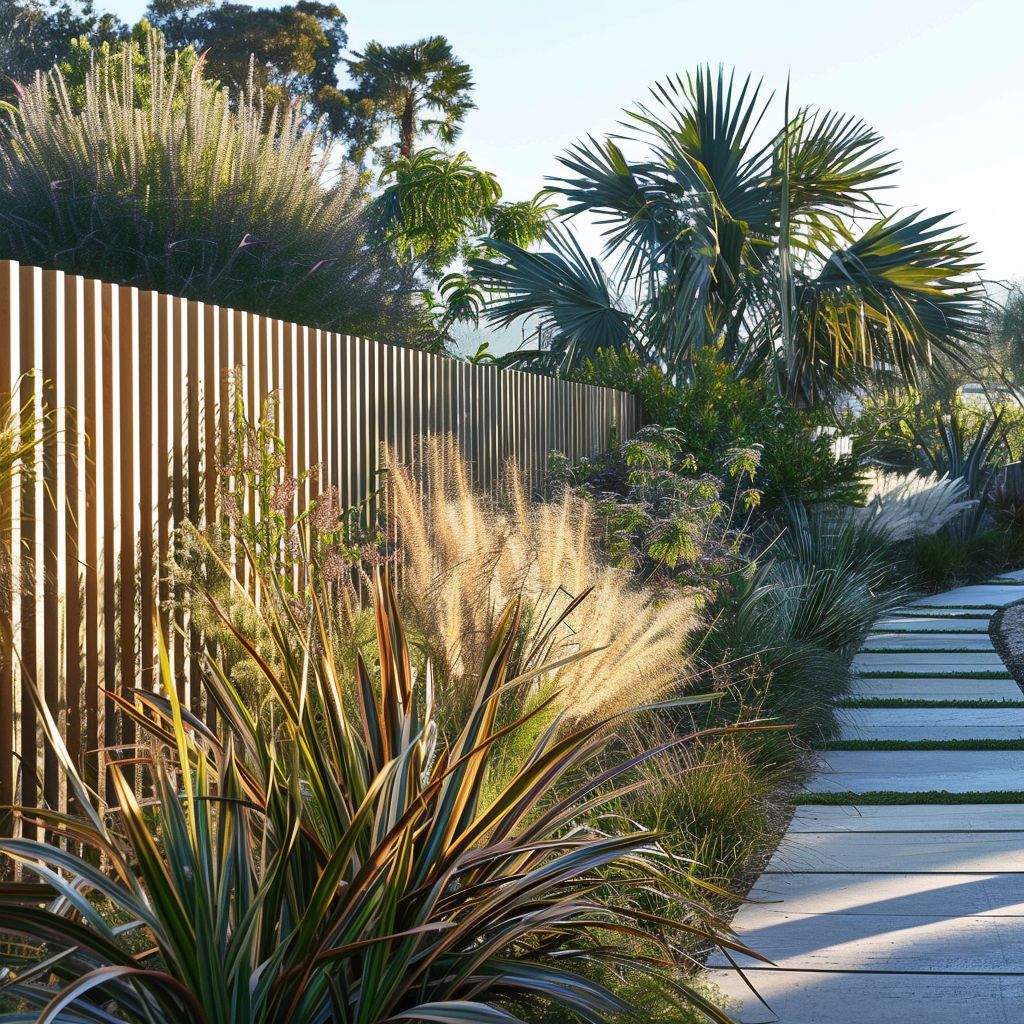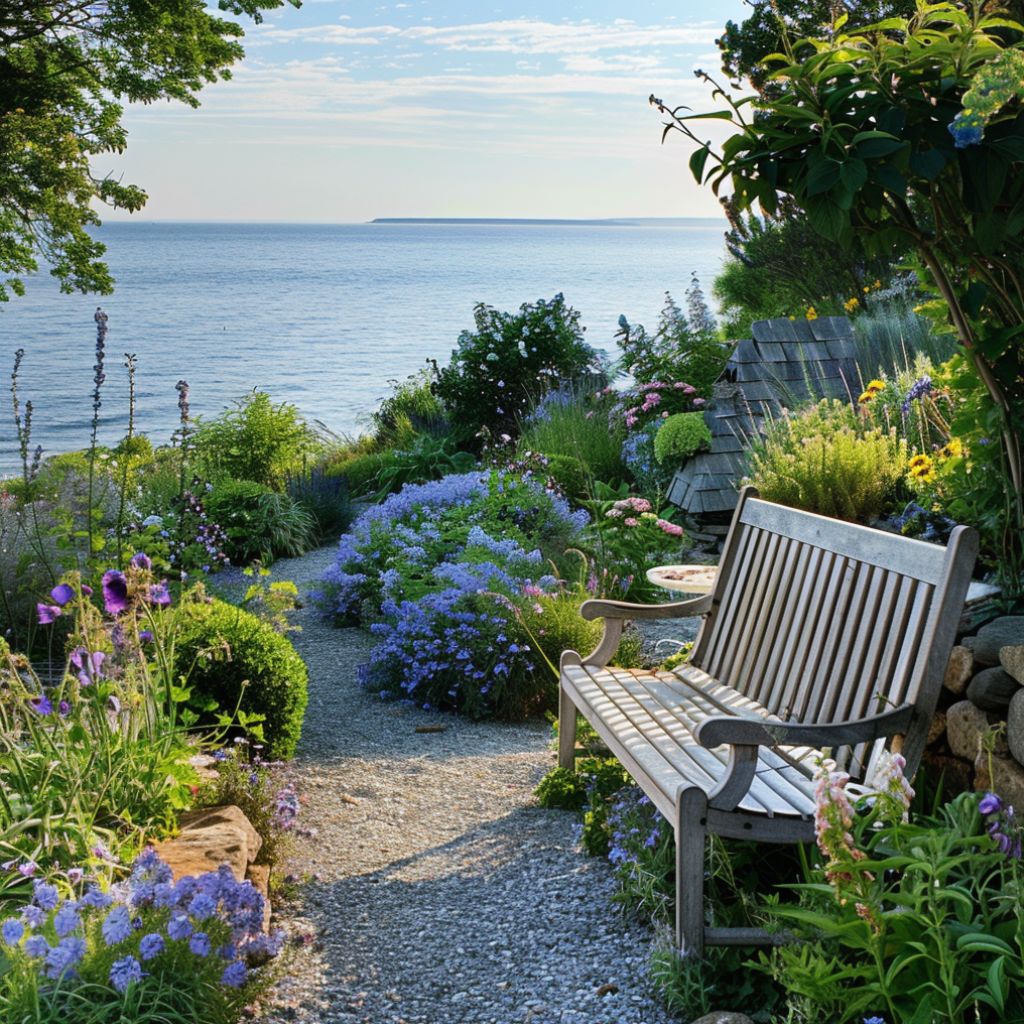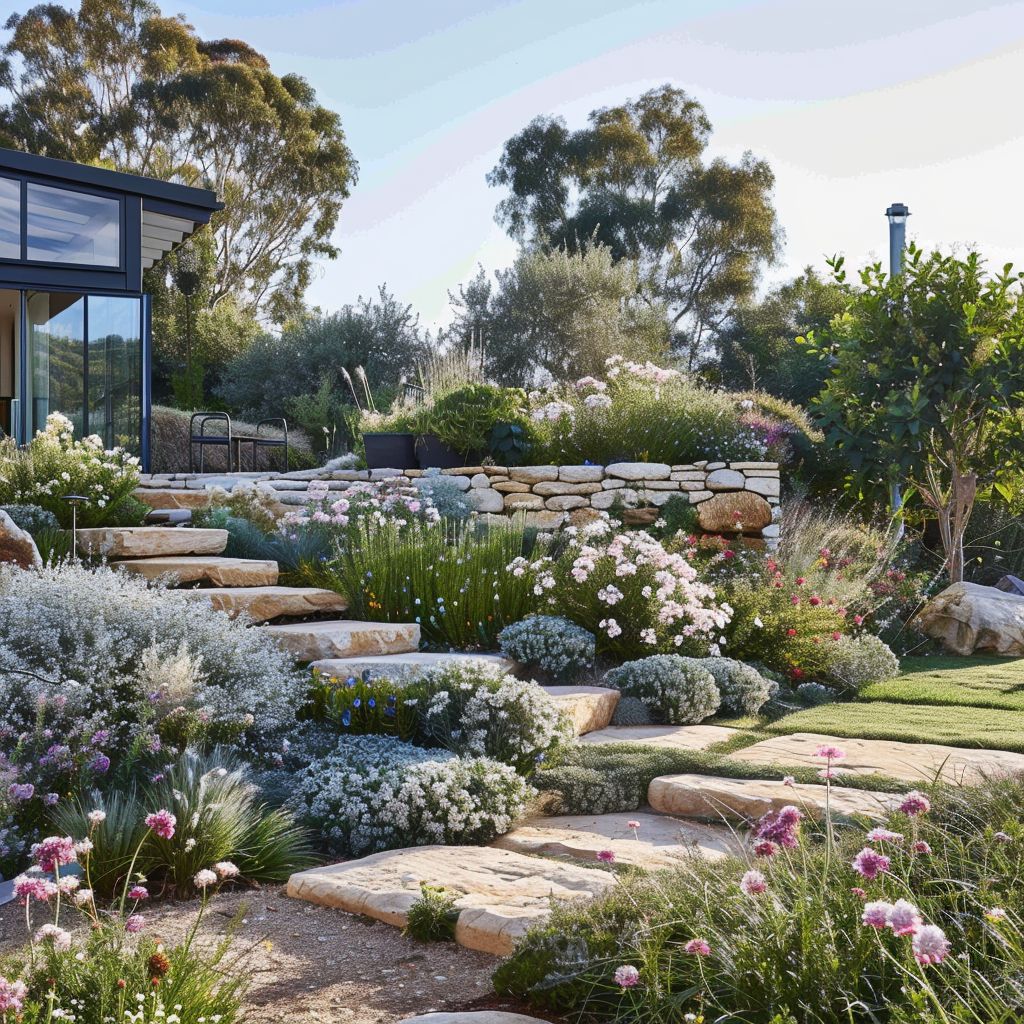Creating a coastal garden that can withstand the harsh Australian coastline while highlighting its natural beauty is no small feat. You may well find yourself battling salty air and dry conditions, wondering how to make your garden thrive. But don’t worry—by selecting suitable native plants and hardy materials, you can transform your outdoor space into a serene coastal retreat.
In this article, we’ll explore practical and inspiring garden ideas tailored for the unique challenges of Australia’s coastal areas. Whether you’re looking to revamp your existing garden or start from scratch, these tips will help you craft a resilient and stunning landscape that you can enjoy for years to come.
Choosing the Right Site for Your Coastal Garden
Choosing the right site for your beach house garden is crucial to its success. You need to consider factors like sunlight, wind, and soil conditions.
Assessing Sunlight and Wind Exposure

Check how much sunlight your garden gets throughout the day. Coastal areas often face strong winds, so it’s vital to analyse their direction and strength. You can use taller plants or hedges to slow down the winds. Options like mounds or sunken areas also help create sheltered spots.
Evaluating Soil Conditions
Examine the soil in your garden. Coastal soils can be sandy, which drains quickly and may need extra nutrients. Adding organic matter can improve its quality. Test the pH level and consider plants that thrive in your specific soil type. Using local materials can blend the garden naturally with its surroundings.
Designing Your Beach Style Garden
Creating a beach-style garden in Australia involves considering local elements and natural beauty. Here’s how to nail it:
Incorporating Local Materials

Use natural materials like stone, driftwood, and shells in your coastal garden. These materials blend seamlessly with the surroundings and enhance the harmonious feel. A wooden boardwalk, sand garden, or water feature inspired by the ocean can add coastal charm.
Planning for Weather Resilience
Choose hardy, native plants that can withstand coastal conditions. These plants require minimal care and add a natural vibe. Think about wind exposure and incorporate taller plants or structures for protection. Enhance sandy soil with organic matter to help your plants thrive.
Utilising Naturalistic Shapes and Curves
Embrace flowing designs that follow the landscape. Avoid harsh lines; instead, opt for gentle, curved shapes. Curved garden beds and pathways make the garden look more relaxed. Mediterranean stone pathways offer an exotic yet earthy touch perfect for coastal settings.
Selecting Plants for Coastal Conditions
Designing a coastal garden means choosing plants that can handle salty air and sandy soil. Here’s your guide to making the best plant selections.
Plants That Thrive in Salty Air

Opt for hardy, salt-tolerant plants. Coastal gardens often include plants like sea holly, beach daisy, and coastal rosemary. These plants thrive despite the challenging conditions. Incorporate them into your garden for a resilient landscape.
Options for Sandy Soil
Choose plants that grow well in sandy soil. Look for species like marram grass, coastal banksia, and pigface. They maintain health even in poor soils. Adding organic matter can also improve soil quality. This helps your plants flourish.
Constructing Functional and Stylish Features
A coastal garden can be enhanced with practical yet stylish elements. Integrate these features smartly to add both visual appeal and functionality.
Building Raised Beds and Decking
Raised beds offer a practical solution for gardening in sandy coastal soils. Construct beds using materials like weather-resistant wood or Corten steel. These materials endure harsh coastal conditions while adding a contemporary look. Elevated beds also help protect plants from strong winds and salty air, creating a more suitable environment for growth. Using decking, you can extend your living space. Opt for treated timber or composite decking to withstand the seaside weather. Decking areas provide perfect spots for outdoor seating and entertaining while seamlessly blending with the natural landscape.
Installing Fences and Windbreaks

Fences and windbreaks are essential for coastal gardens. Use hardy materials like wooden slats or corrugated metal to limit the impact of strong winds. Planting fast-growing, wind-tolerant shrubs like coastal banksia or casuarina can create natural barriers. These shrubs reduce wind speed, protecting more delicate plants in your garden. Additionally, incorporating see-through panels in fence designs allows light to filter through while still providing the necessary wind protection. This combination of plants and materials ensures both functionality and a visually appealing landscape.
Adding Aesthetic Elements
Creating a Seating Area to Enjoy the View

Install coastal-themed benches or chairs to savour the ocean scenery. Opt for weather-resistant materials like teak or recycled plastic. Place your seating in a sheltered spot to shield you from the wind, allowing for year-round use.
Using Decorative Gravel and Beach-Themed Decor
Sprinkle decorative gravel along pathways and garden beds for texture. Choose hues like white or grey to reflect beach aesthetics. Add beach-themed ornaments such as driftwood, seashells, or nautical sculptures. These touches evoke a seaside charm and blend smoothly with natural surroundings.
Maintaining Your Coastal Garden
Strategies for Plant Care and Maintenance
Choose hardy plants suited for coastal conditions. Native species like pigface and coastal rosemary thrive in sandy, salty soils. Water deeply but infrequently to encourage deep root growth.
Prune regularly to maintain shape and health. Remove dead or damaged branches and avoid overfeeding. Use a slow-release fertiliser to nourish your plants without overwhelming them.
Protection Against Coastal Elements
Create windbreaks using hardy Australian flora or fences. This shields delicate plants from strong coastal breezes. Position taller structures strategically to deflect the wind’s force.
Utilise mulch to insulate the soil and reduce moisture loss. Mulch also protects plant roots from salt spray, which can be damaging. Look for water-permeable options to prevent root rot.
Regularly inspect your garden for salt damage or erosion. Address issues quickly to prevent further harm, and consider adding organic matter to improve soil structure and drainage.
Coastal Garden Case Studies
Inspirational Designs and Real-Life Examples
Coolamon House Garden

Perched on an ancient volcano crater, Coolamon House offers breathtaking ocean views. The garden here uses a rich combination of local flora to blend seamlessly with its surroundings. The result is a lush, green oasis that celebrates the unique local landscape.
Black Rock Garden
In Melbourne, Andrew Panton Design created a bayside garden overflowing with foliage. Formal hedging complements the natural beauty of the coast. This garden perfectly balances structure with organic elements, providing a serene escape.
Mornington Peninsula Sanctuary
Ian Barker Gardens designed a private outdoor retreat on the Mornington Peninsula. This garden features layers of greenery, creating a peaceful sanctuary away from the wind. It’s an excellent example of how to use dense foliage for shelter and privacy.
Lower North Shore Residence
On the Lower North Shore, Bates Landscapes combined subtropical plants with contemporary design. The garden’s steep, windy conditions didn’t hamper its beauty. Instead, the plant choices and layout seamlessly integrate with the home’s stylish architecture.
Boulder House Courtyard
Inspired by the Greek islands, this garden features a sandstone cabana cave. The tropical courtyard by Wyer & Co. offers a vibrant and relaxed vibe. It’s a glorious getaway within an urban setting, mixing practicality with exotic charm.
These case studies highlight how to merge local materials and native plants to create stunning coastal gardens. Each example showcases a different approach, but all succeed in transforming challenging coastal conditions into beautiful, serene spaces.
Up next:
